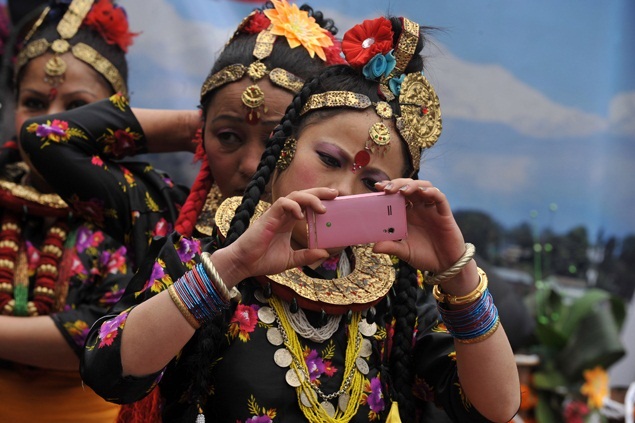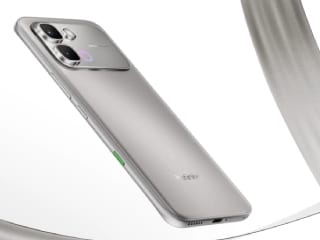- Home
- Mobiles
- Mobiles Features
- Smartphones buyer's guide: Spring 2014
Smartphones buyer's guide: Spring 2014

It's an interesting time to be in the market for a new smartphone. A number of recent high-profile launches have made us rethink our expectations of what it's possible to get in certain price categories, especially at the low end. We're also barely a month away from the launches of all the new flagship models that were unveiled at the Mobile World Congress last month.
(Update: This guide is outdated. Please refer to the Smartphone Buyer's Guide: Summer 2014 for the latest version)
Motorola has taken India by storm with its new Moto G, which is now highly sought after for its fantastic value features and construction quality. BlackBerry has reduced the price of its Z10 to only Rs. 17,990, which should make even strong sceptics give it a second thought. On the other hand, that strategy won't work for all - Apple's iPhone 4 isn't a compelling option even if you can find it for under Rs. 20,000.
Similarly, Samsung has dropped the price of its Galaxy S4, which catapults it into a whole new price band, where it actually looks pretty good. Its contemporaries from Sony, HTC and LG feel unattractive by comparison, since they now compete with fresh blood and it's only a matter of time before those companies follow suit.
We've divided the market into a number of price bands, based on current trends and the amount a buyer can usually stretch his or her budget by after having identified a reasonable model. Generally, the phones in each price band will be comparable in terms of features and capabilities. We've also considered current street prices, as opposed to MRPs, since these prices do drop over the course of a device's life, and what really matters is the price right now.
The cheapest devices that could possibly qualify as smartphones sell for between Rs. 5,000 and Rs. 9,000. Beyond that range and up to Rs. 14,000, it is now possible to buy a modern smartphone with all the basic features in place.
Between Rs. 14,000 and Rs. 30,000, we are firmly in mid-range territory. However, due to the massive difference between devices at either end of this band, we've subdivided it even further. Budget-friendly options now include models with quad-core processors and reasonably good cameras, with Indian brands muscling in on the territory formerly dominated by multinationals. You also have a wider range of platform options. A number of smartphones that were top end just a year ago, and are still perfectly serviceable, make up the higher end of this band.
Above Rs. 30,000, we have a variety of models that are nearly as powerful as the flagships of each brand. These are usually only one generation old, or "lite" versions of top-end products, and represent pretty good value for money.
Most current flagship models are priced between Rs. 40,000 and Rs. 65,000. In this range, you'll find each brand's most feature-laden phone. In fact, most are priced at around Rs. 45,000, with the upper reaches of this category made up of variants with more storage capacity. Be warned, though! Many of these flagships are nearing the end of their reign, and will see significant price cuts in the near future.
Of course, if money is no object, there are phones even more luxurious that you can splash out on. Some of these have designer touches, or are built out of luxurious materials.
Here are our top picks in each category:
Rs. 5,000 - 9,000
Samsung's Galaxy Star and Galaxy Star Pro might be two of India's bestselling smartphones, but they'll now have to compete with the brand new Nokia X (approximate street price: Rs. 7,800). Running a custom Android fork, the X has the unique advantage of Nokia's clout, and the company has every intention of reclaiming lost ground. The Nokia X can't boast of any fancy specifications, but at this end of the budget spectrum, we weren't expecting that anyway. The choice is between Samsung's fully-featured Android, and Nokia's superb design.
On the local front, you could also consider the Micromax Canvas Doodle, which has a big, but awfully low-res screen to boast of.
Rs. 9,000 - 14,000
Just a few months ago, we would have had to scour through hundreds of spec sheets and test scores to identify a single the winner in this budget range. Now, there's just no competition to the new Motorola Moto G, which has, in one single shot, redefined the entire category (approximate street price: Rs. 14,000 (16GB); Rs. 12,500 (8GB)). Its build quality and features belie its low price. There are a few compromises, such as a lack of expandable memory, but the 16GB version is only very slightly more expensive than the 8GB, so it's a no-brainer to get that.
Even though the Moto G impressed us tremendously, we'd be remiss not to point out the options that exist in its price range. The Nokia Lumia 525 is a powerful little Windows Phone, and its unique style will attract its own fans. Lenovo's P780 has a pretty impressive spec sheet, but it's the 4000mAh battery that gives it its biggest edge.
Rs. 14,000 - 17,000
Another step up, and we find a number of interesting models from Indian and international brands alike. Xolo's Q1100 is a surprisingly good performer, and has a well-rounded spec sheet to boot (approximate street price: Rs. 13,400). Lava's Iris Pro 30 offers similarly good value, and its smaller screen is a lot sharper.
Most phones use the same low-end MediaTek processors, and have limited onboard storage. The Lenovo S820 offers good battery life and a decent HD screen, plus the assurance of an international brand name.
Rs. 17,000 - 22,000
While all the price bands below this point have been dominated by India brands, multinationals are pushing hard in this territory. Our favourite here is the recently launched Micromax Canvas Knight, which boasts of an octa-core processor and full-HD screen (approximate street price: Rs. 20,000).
The Nokia Lumia 1320 is a compelling option if you like the Windows Phone OS. It's the strongest big-screened phone you can buy in this price range, and even though it can't match the Lumia 1520's camera, you'll enjoy movies and light gaming.
Interestingly, BlackBerry's recent dramatic price drop on the Z10 makes it an option to buyers in this price range. The BB10 OS is severely limited, and things aren't looking up in terms of future support. However, it's beautifully built, has a great soft keyboard, and will run a large number of Android apps with just a little know-how.
Rs. 22,000 - 30,000
With a significant price cut keeping it relevant, Samsung's Galaxy S4 takes the crown in our mid-range category, whereas it would have been quite easy to overlook in a higher budget range (approximate street price: Rs. 29,000). We're more than happy with the combination of features it offers, even if it is a year old now.
Fans of Google's stock Android experience will be very happy with the company's own Nexus 5. It's manufactured by LG, but fully designed by Google itself. Now that the S4 is in the same price territory, though, it's looking a lot less attractive.
Another interesting Android option is Sony's ruggedized Xperia ZR. This model can withstand exposure to dust and liquids, though by today's standard, you'll find its performance slightly lacking. Finally, if you aren't too concerned about brands, it might be worth checking out the Gionee Elife E7, which has proven popular thanks to its good specifications and better price.
Rs. 30,000 - 40,000
Most of the models you're likely to find in this price range are last year's flagships or lower priced variants of models in the previous category. One refreshing exception is LG's G2 (approximate street price: Rs. 38,900). Not everyone will be a fan of the quirky buttons-on-the-back design, but it's a stellar Android phone and it checks most of the right boxes for us.
For those who would prefer a smaller phone, Sony's Z1 Compact is an interesting phone that doesn't compromise on specifications in order to squeeze itself into a more pocketable body. You still get all the flexibility of Android, plus Sony's audio and video tweaks. On the other hand, there's Samsung's extra-large Galaxy Note 3 Neo, which has slightly lower specifications than the Note 3, but all the same conveniences.
If you appreciate a truly fantastic camera, there's no better choice than Nokia's Lumia 1020. Sure, it's a little bulky and it runs Windows Phone, but there really isn't anything at all like it on the market. Nokia's PureView tech could put most standalone cameras to shame.
Finally, the iPhone 5c, which has often been derided as overpriced and plasticky, is now selling for well under Rs. 40,000 at several online retailers. That's cheaper than the iPhone 5 ever was, and you get the all the same features that made last year's top-end iPhone a smash hit.
Rs. 40,000 - 65,000
Thanks to the current state of the Indian Rupee vs the US Dollar, most of the flagship phones launched in the past year are clustered around the Rs. 45,000 mark. Depending on your preference of operating system, there are choices from Samsung, Apple and Nokia. Our pick is the Samsung Galaxy Note 3, which combines powerful hardware and innovative software, resulting in features like the S-Pen and Multi Window that can show two apps side by side (approximate street price: Rs. 43,000). Its large screen is well suited for gaming, movies and productivity apps alike.
If you'd like something a little more pocketable, you can't go wrong with the iPhone 5s. This sleek, aluminium phone comes with an industry-first fingerprint sensor that takes all the effort out of tapping in passwords and PIN codes, a screaming fast processor, and of course a library of thousands of apps and games.
On the other end of the spectrum, Nokia's Lumia 1520 has an enormous 6-inch screen and comes in brightly coloured plastic. Windows Phone isn't the most versatile OS, but it does have its fans. The Lumia 1520's biggest asset is its fantastic camera. You'll be genuinely shocked at how good the photos it takes are, and that's including low-light situations.
Rs. 65,000 and above.
It might seem ridiculous to some that a phone should cost so much, but if you want something to show off that's unlike any other device on the market, this is the minimum amount you should be looking at. Right now, LG's G Flex is sitting pretty at the top of most price lists - in fact, it's the only model in mainstream retail that really qualifies for this category, and thus finds itself on our list by default. Alternatively, you could spring for the highest capacity iPhone 5s and go crazy with apps, games and movies.
In terms of features and specifications, spending this much money will not get you a phone that's commensurately faster or better than the models in the previous category. However, what you get will be undeniably exclusive, and will set tongues wagging wherever you whip it out. If you're the type of buyer who doesn't even need to ask the price, and exclusivity is the most important factor (even more functionality), you can check out special edition models such as the BlackBerry P'9982 by Porsche Design, or a number of bespoke options from the likes of Vertu.
No matter what your budget, you'll find a lot of excitement in the market right now. Be sure to click on all the products you're interested in and go through our exhaustive reviews, to settle on the phone that will be best for you.
Catch the latest from the Consumer Electronics Show on Gadgets 360, at our CES 2026 hub.
Related Stories
- Samsung Galaxy Unpacked 2025
- ChatGPT
- Redmi Note 14 Pro+
- iPhone 16
- Apple Vision Pro
- Oneplus 12
- OnePlus Nord CE 3 Lite 5G
- iPhone 13
- Xiaomi 14 Pro
- Oppo Find N3
- Tecno Spark Go (2023)
- Realme V30
- Best Phones Under 25000
- Samsung Galaxy S24 Series
- Cryptocurrency
- iQoo 12
- Samsung Galaxy S24 Ultra
- Giottus
- Samsung Galaxy Z Flip 5
- Apple 'Scary Fast'
- Housefull 5
- GoPro Hero 12 Black Review
- Invincible Season 2
- JioGlass
- HD Ready TV
- Laptop Under 50000
- Smartwatch Under 10000
- Latest Mobile Phones
- Compare Phones
- Lava Blaze Duo 3
- Tecno Spark Go 3
- iQOO Z11 Turbo
- OPPO A6c
- Samsung Galaxy A07 5G
- Vivo Y500i
- OnePlus Turbo 6V
- OnePlus Turbo 6
- Lenovo Yoga Slim 7x (2025)
- Lenovo Yoga Slim 7a
- Lenovo Idea Tab Plus
- Realme Pad 3
- Garmin Quatix 8 Pro
- NoiseFit Pro 6R
- Haier H5E Series
- Acerpure Nitro Z Series 100-inch QLED TV
- Asus ROG Ally
- Nintendo Switch Lite
- Haier 1.6 Ton 5 Star Inverter Split AC (HSU19G-MZAID5BN-INV)
- Haier 1.6 Ton 5 Star Inverter Split AC (HSU19G-MZAIM5BN-INV)







![[Sponsored] Haier C90 OLED TV | Dolby Vision IQ, 144Hz OLED and Google TV in Action](https://www.gadgets360.com/static/mobile/images/spacer.png)









